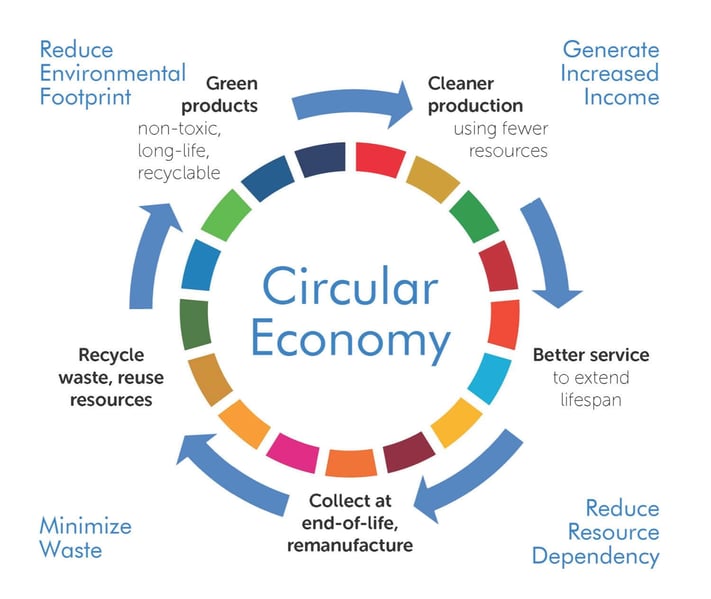In a year of unprecedented hardship and uncertainty, the Covid-19 pandemic has highlighted the relationships between ecological, economic, and political systems, creating a context in which more and more people are aware of both the fragility of these systems and the ways in which our actions and decisions can shape them. This widespread understanding has led to the rapid dissemination of information and prominence of discussions around critical issues such as climate change, economic and racial inequality, and the need to make significant changes in the dominant economic paradigm in order to meaningfully respond to and address the interrelated challenges of our time.
The fact that the planet is a finite, interconnected system that requires our thoughtful participation is not a new concept – its been at the forefront of many environmental and social movements over the last several decades, if not centuries.
Now, however, there is an accelerating sense of urgency around the fact that modern economic systems based on extraction, “waste,” and accumulation of wealth are driving the systems that life on earth requires to survive to the point of no return. Efforts to quantify the safe operating space for human life on Earth have taken shape in the form of Planetary Boundaries, which demonstrate the mathematics of the finite resources that we have to work with.
This sobering knowledge has led in turn to renewed calls for an economic system that acknowledges, works with, and values the finite nature of resources, leading to calls for a more Circular Economy, in which resources formerly considered “waste” are instead built into the design, manufacturing, delivery, use, and end-of-life cycle that any item – from a box of crackers on a store shelf to a carpet in a new office building – inevitably embodies.

The recent discussion hosted by the World Resources Institute (WRI) outlined the Circular Economy Action Agenda, with a call for businesses, governments, and civil society to rapidly invest in and move towards a Circular Economy. According to their estimates, 45% of current greenhouse gas emissions come from the products that are produced, consumed, and disposed of in the current more linear approach.

A recent report prepared by the WRI identified components of commonly used consumer goods as major contributors to global carbon emissions that can’t be easily addressed by moves to increase energy efficiency, including plastics, cement, steel, aluminum, and food. According to their research, transforming the ways in which these goods are manufactured, used, and disposed of is the only way that current global greenhouse gas emissions targets can be reached. In other words, we need to transition to a Circular Economy of consumer goods as soon as possible.
The Action Agenda the WRI and others working on the Circular Economy propose is exciting because its inherently focused on not only finding ways to live within Planetary Boundaries, but also meeting the Sustainable Development Goals (SDGs), and also fostering innovation and economic growth, challenging the long-held assumption that focusing on environmental issues will lead to declining economic outcomes.
Their Action Agenda on Plastics addresses a series of particularly pressing concerns, including their longevity in living ecosystems once they are disposed of. Although plastics are convenient and relatively cheap, their widespread use in the linear economic model is not based on a built-in plan around what happens at the end of their use, leading to widespread plastic pollution and concerns about microplastics as these products degrade into ever-smaller pieces that disrupt biological foodwebs.
Taking action to create a New Plastics Economy will lead to plastics use based on their entire life cycle, including an analysis of which plastics are really necessary, and underscoring the need to redesign packaging and storage of products to move away from single-use plastics. Optimizing and enhancing access to and use of plastics recycling is also necessary. Interestingly, in a Circular Economic Model, recycling is actually a key feature of market value chains, as instead of simply planning on everything being thrown “away” and manufacturing more, it will be necessary (and more economically viable) to access recycled materials.
The Circular Economic model fundamentally eliminates the concept of waste, as on a finite planet, there is no such thing as “waste” – everything ends up somewhere, whether its fossil carbon in the atmosphere or plastic particles in zooplankton. The Circular Economy represents a maturing of our collective understanding of how life endures on the planet, and offers a means of transitioning into a way of thinking about ourselves and our relationship to the materials and processes that make our lives – and the lives of so many other species – possible. This is exactly the type of thinking that will facilitate a truly just and regenerative future for all.